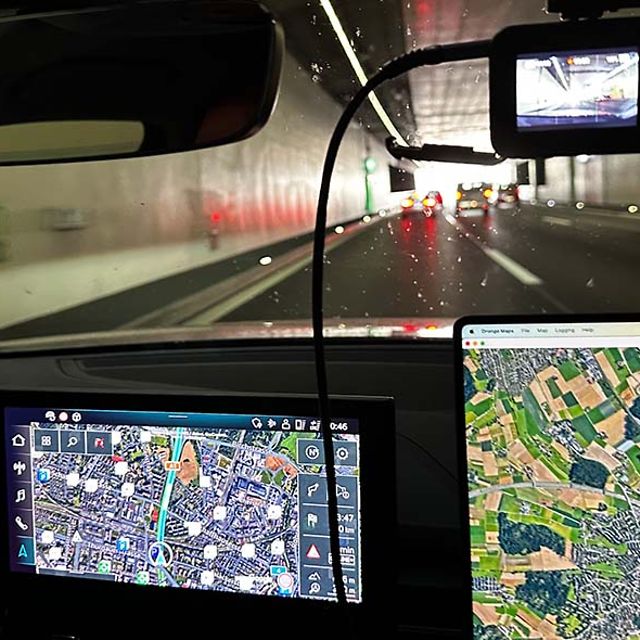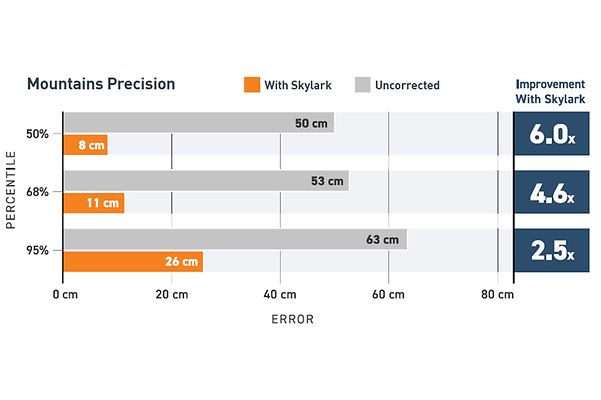NB: The following accuracy ratings relate to measurements based on 95 percent of the data (95 Percentile / 2-Sigma).
Over the entire journey the accuracy of the Precise Positioning solution was to within 34 cm (for 95%), compared with the 82 cm achieved by Standard GNSS. Given the accuracy requirement of about one meter in the automobile sector Standard GNSS might appear to be good enough, so why bother with corrections? There are, however, two important reasons to aim for greater accuracy:
1. An accuracy of 95 percent means that positioning is less precise in five percent of cases. As we move toward totally autonomous vehicles we must increase confidence in the accuracy of positions in order to ensure safe operation. An accuracy—or rather inaccuracy—of 82 centimeters does not leave much leeway for correction.
2. Overall accuracy does not say much about how the system works in the most difficult environments. Assisted and autonomous driving must be safe everywhere and not just under unhindered conditions under an open sky.
Let us take a closer look at four environments in which Precise Positioning is really put to the test:
- Urban canyons where signals are blocked by buildings and multi-directional errors such as reflections or scatterings pose a challenge
- Tunnel exits where you have to rely on dead reckoning (see below) until the satellite signal has been restored
- Multi-lane roads on which the vehicle must sure which lane it is in
- Mountains, which frequently affect the satellite signal








